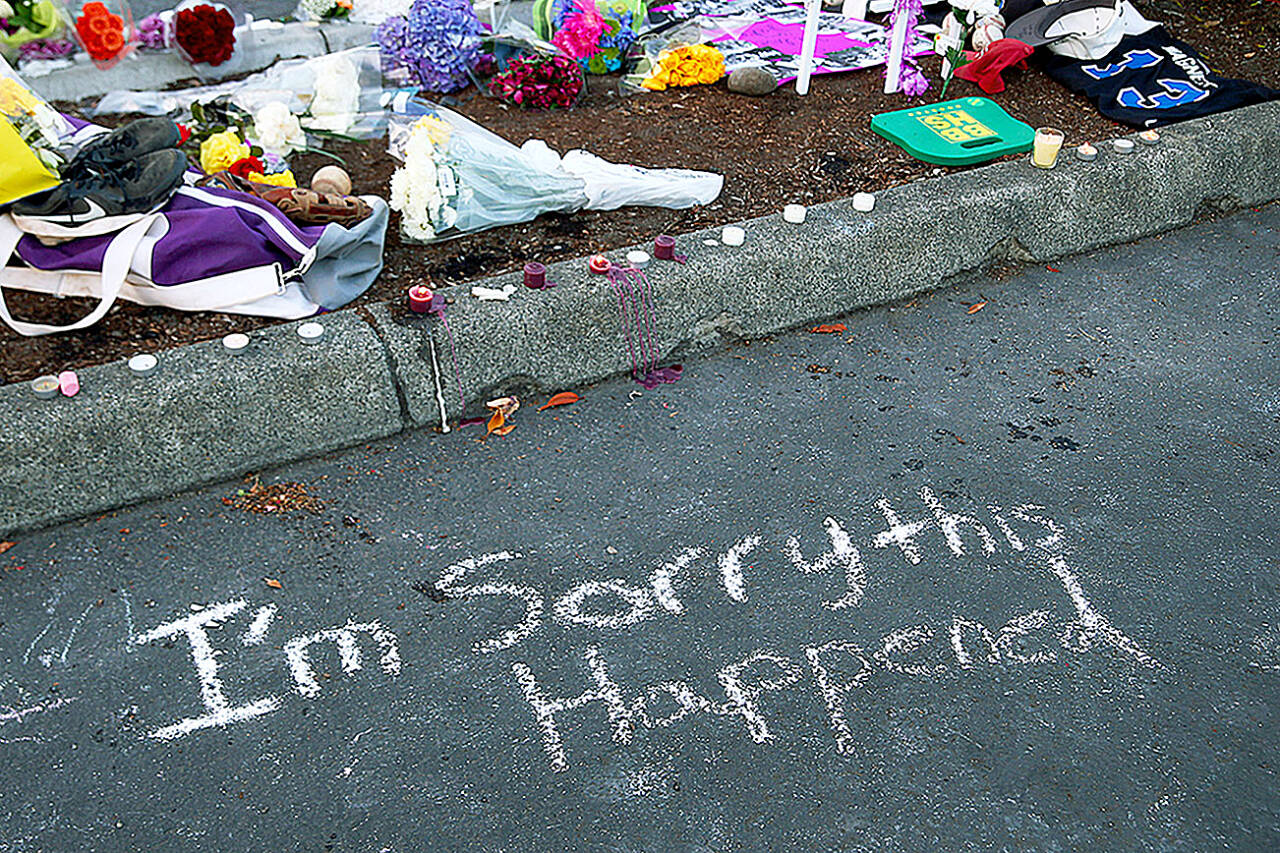By The Herald Editorial Board
It took the outrage over the school shooting of 19 young students and two teachers in Uvalde, Texas, last year to shake Congress out of lack of action — a stupor that had lasted 29 years — on passage of firearm safety legislation.
Among its reforms were tougher background checks for gun buyers younger than 21; $15 billion in funding for mental health programs and school security upgrades; financial incentives to states to implement extreme-risk protection orders that confiscate guns from those who pose a threat to themselves or others; and closure of the “boyfriend loophole,” intended to block sales of firearms to those convicted of abusing unmarried intimate partners.
Washington, among other states, has gone further in recent years — including last year — adopting through the Legislature or by citizen initiative: bans on high-capacity magazines and ghost guns, as well as bump stocks that turn semi-automatic firearms into automatic weapons; universal background checks; extreme-risk protection orders; an age requirement of 21 for purchase of semi-automatic weapons; limits that bar the open-carry of firearms at demonstrations, ballot-counting centers and public meetings; and laws mandating safe storage of firearms in the home.
What has eluded supporters in past years has been a ban on “assault weapons.”
It didn’t happen after the 2014 mass shooting of high school students by a fellow student with a semiautomatic pistol in the cafeteria of Marysville Pilchuck High School, which killed four and wounded a fifth before the shooter killed himself.
Nor after the 2016 fatal shooting of three Kamiak High School graduates and the wounding of a fourth by a 19-year-old Mukilteo man with an AR-15-style semiautomatic weapon.
Now jointly requested by state Attorney General Bob Ferguson and Gov. Jay Inslee, at least two bills — Senate Bill 5265 and House Bill 1240 — are back before state lawmakers that seek to prohibit the sale, manufacture and import of assault weapons. (The legislation allows exemptions for law enforcement and the military and does not prohibit the possession of the firearms to those who already own them.)
The assault weapon ban is joined by a second proposal that would make firearms manufacturers and gun dealers liable to lawsuits if they fail to take steps to prevent firearms from getting into the wrong hands or market them irresponsibly.
Like last year’s successful ban on high-capacity magazines, which limits sales to ammunition magazines of 10 rounds or fewer, the ban on assault-style or military-style weapons recognizes these firearms for what they are and why they can constitutionally be excluded from legal sale: The purpose of such firearms — modeled after the destructive power of weapons meant for the battlefield — is more about amusement than for their utility in hunting or for protection of home and lives.
Instead, these weapons are the choice of mass-shooters, increasing the numbers of deaths and injuries in those shootings by six times. As well, assault weapons are seven times more likely to be involved in the shooting deaths of law enforcement officers compared to other firearms, according to figures released by the Office of the Attorney General.
Yet a third proposal, however, may do even more to curb firearm violence and suicides. House Bill 1143 and Senate Bill 5211 would require those seeking to purchase a firearm to complete a firearm safety course and a background check to obtain a firearms license.
Even more than an assault weapon ban or stronger background checks, requiring gun owners to obtain a license could have a broader reach because the process allows opportunities to identify those who should not be trusted with a firearm, like the 19-year-old who bought his assault weapon four days before the Mukilteo shooting; or the Tulalip man who illegally obtained the semiautomatic pistol that his son used in the Marysville shooting.
As well, those who complete a safety course and background check show a commitment to safety and responsible firearm ownership. License requirements also would deter “straw purchases,” where a third party buys a firearm for someone who is prohibited from owning a firearm.
A number of studies by researchers, including at the Johns Hopkins Center for Gun Policy and Research and the Johns Hopkins Bloomberg School of Public Health, have shown that licensing requirements result in a decline in gun deaths, including those from suicide, which account for about 54 percent of all firearm deaths.
A comparison of the different approaches of two states was illustrated in a 2022 New York Times commentary that cited the Johns Hopkins research: Connecticut tightened licensing requirements in 1995 and saw its firearm homicide rate drop 40 percent and its deaths from gun suicide drop 15 percent. Conversely, when Missouri repealed gun licensing requirements in 2007, its gun homicide rate increased 27 percent while firearm suicides increased by 16 percent through 2017.
Those who will oppose the measures above should not assume they will easily fall to challenges either before the state’s constitution or that of the U.S. Constitution’s Second Amendment.
Even in last year’s U.S. Supreme Court decision, which rejected a New York state law limiting concealed weapons permits only to those who could show a special need to carry a firearm outside the home, members of the court’s conservative majority echoed the standard set in a 2008 opinion by the late-Justice Antonin Scalia that “like most rights, the right secured by the Second Amendment is not unlimited.”
Justice Brett Kavanaugh, in a concurring opinion in last year’s case and joined by Chief Justice John Roberts, argued that “shall-issue license regimes” were constitutionally permissible and that “the Second Amendment allows a ‘variety’ of gun regulations.”
Opponents bristle at the phrase, but the proposed legislation and other related bills, are every bit “common-sense gun laws.”
Talk to us
> Give us your news tips.
> Send us a letter to the editor.
> More Herald contact information.

























